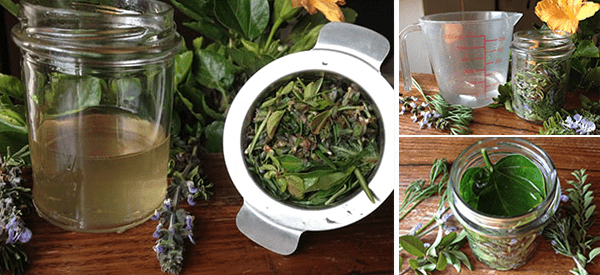
Natural Antibiotic in a Jar
Just type into any online scientific research site “antibiotic” or “antibacterial” and you will be overwhelmed by the plethora of articles. It seems like just about any kind of plant has some degree of anti-bacterial activity, and some are even effective against drug-resistant strains.
However, it may not be just a matter of throwing a few herbs in a jar of alcohol to soak for two weeks. There are some limitations with plant-based antibiotics; mostly with respect to knowing exactly which bacterium strain you are up against. Another issue when researching this topic is that many of the anti-bacterial studies use essential oil in a lab setting, which is fine, but what if you want to use home-grown plant matter? And what if you have no idea what type of bacterial infection you have?
The solution is to try combining a number of antibiotic “generalists”; plants that fight a wide variety of bacteria (and are relatively easy to grow!) into a tincture.
Types of Bacterial Infections
Staphylococcus aureus, Streptococcus pyogenes and Pseudomonas are the most common bacteria responsible for skin and post-surgery infections.
An imbalance in the populations of E. coli, Salmonella, Clostridium difficile, Shigella and Campylobacter bacteria are the most common causes of gastrointestinal infections.
Plants Which Are Effective Antibiotic Generalists
Below is a list of plants whose antibacterial properties can be extracted in alcohol to effectively treat various types of bacterial infections.
- Coleus (Plectranthus spp.) alcohol extract inhibited staph, E. coli and a few other types of drug-resistant bacteria.
 Sage (Salvia spp.) species from all over the world have proven antibiotic properties which are effectively extracted in alcohol, especially the flowers.
Sage (Salvia spp.) species from all over the world have proven antibiotic properties which are effectively extracted in alcohol, especially the flowers.- Blessed thistle (Cnicus benedictus) alcoholic flower extract is effective against a wide range of bacteria particularly staph and strep bacteria, including some strains that are drug-resistant, and to a lesser extent, pseudomonas.
- Hibiscus (Hibiscus spp.) leaf alcoholic extracts were effective against a wide range of bacteria, particularly pseudomonads.
- Chrysanthemum (Chrysanthemum spp.) was effective against both skin and intestinal bacteria.
- Oregano (Origanum vulgare) leaves infused in room-temperature water is an effective antibiotic against staph and strep, but a boiling water infusion was found to be ineffective. For this reason, 80 proof or 40% alcohol is more effective than pure alcohol.

- Rosemary (Rosmarinus officinalis) had a stronger anti-bacterial effect in polar solvents (such as alcohol and vinegar) compared to its essential oil.
- Mango (Mangifera indica) leaves produced a stronger anti-bacterial effect in an alcohol extract compared to other extraction methods.
- Wormwood (Artemisia spp.) leaves are an anti-bacterial, particularly for gram-negative bacteria including E. coli and E. faecalis.
- Burdock (Arctium lappa) leaves inhibited both E. coli and salmonella, as well as Pseudomonads.
- Barberry and Oregon grape (Berberis spp.) stems, bark and roots contain berberine, which is an effective antimicrobial. Berberine is slightly more soluble in water, so it works better with dried roots in 80 proof or 40% alcohol rather than 90% or pure alcohol.
- Goldenseal (Hydrastis canadensis) also contains berberine, so extracts better in 40% alcohol. This endangered plant is now available in the US commercially, but be sure NOT to purchase wild-harvested goldenseal.
How To Make An Antibiotic Tincture
Today, I am using fresh sage, hibiscus, rosemary, oregano, wormwood and barberry flowers, stems and leaves for my tincture. Whichever plants you decide to choose, in most cases, the method only changes depending on whether you are using fresh or dried herbs.
For most plants, a rough guide for a fresh herb tincture is a 1:2 ratio. Which means for every ounce or gram of fresh herb, you need twice as much alcohol in liquid ounces or milliliters. In this situation, you want as high a proof alcohol as possible (over 80% alcohol), since the fresh plant material will carry a lot of water.
A dried herb tincture uses a 1:5 ratio. For every ounce or gram of dried herbs you will need to soak them in 5 liquid ounces or milliliters of alcohol. For dried herb tinctures, a regular 80 proof or 40% alcohol such as vodka or rum will suffice.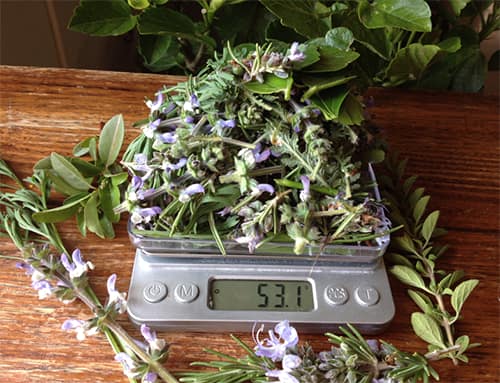
Method For An Antibiotic In a Jar
Once you have weighed out your herbs and alcohol, simply place them in a jar with the lid on and make sure to submerge all of the plant matter in the alcohol (I’m using a large hibiscus leaf).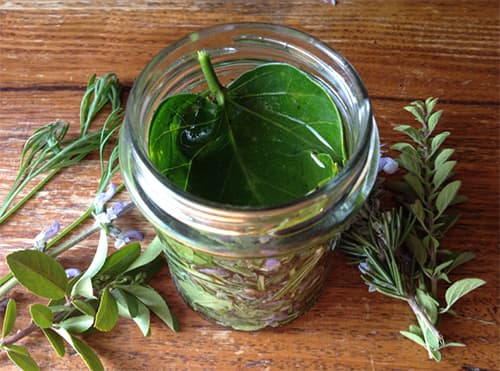
If you are using dried herbs, allow the herbs to soak for a couple of hours in the alcohol before attempting to keep them submerged with a tea strainer, small glass or scrunched up baking paper.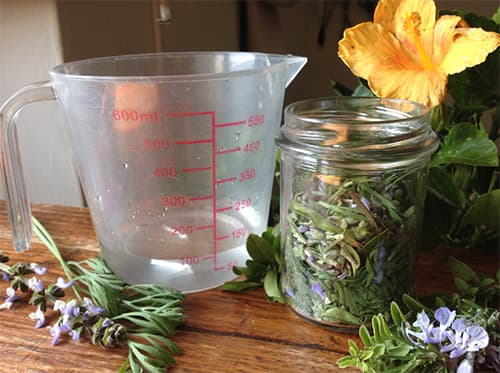
Place it in the fridge so that you remember to agitate it every day.
As for the length of time, most of the extraction will be completed within the first week, whereas roots, bark, seeds and nuts will require a second week. Then the mix can be strained and stored in a dark, cool location for up to a year.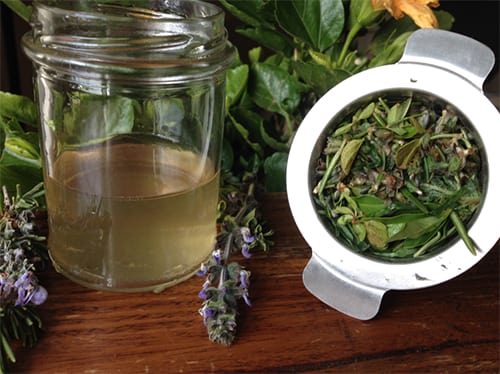
Dosage
Take one teaspoon per day.
Continue taking one teaspoon for 1 – 2 weeks after symptoms have disappeared.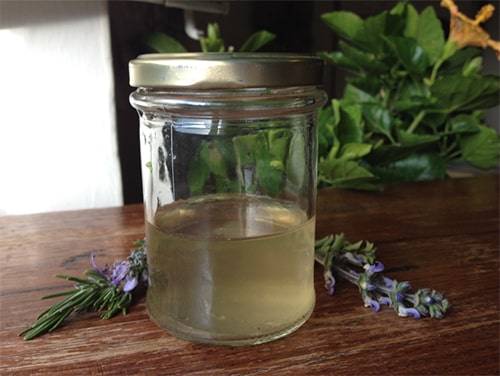
Conclusion
So, depending on which bacteria you are targeting, it might actually be as easy as throwing a few particular herbs into a jar of alcohol after all!
Just remember the ratios and you are good to go.
You may also like:
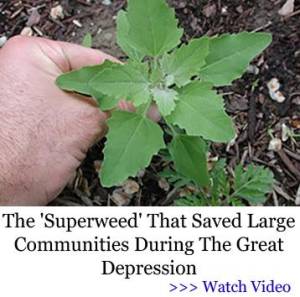 7 Natural Remedies for Fibromyalgia Pain
7 Natural Remedies for Fibromyalgia Pain
The Only 4 Antibiotics People Should Stockpile (Video)
DIY Painkilling Extract From a Pineapple
10 Natural Antibiotics You Can Find in Your Garden
How to Make an Antihistamine Balm for Natural Allergy Relief

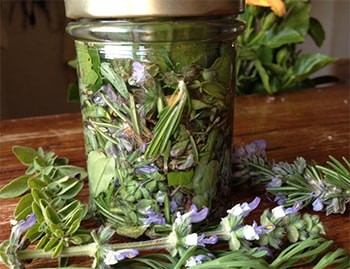 Sage (Salvia spp.) species from all over the world have proven antibiotic properties which are effectively extracted in alcohol, especially the flowers.
Sage (Salvia spp.) species from all over the world have proven antibiotic properties which are effectively extracted in alcohol, especially the flowers.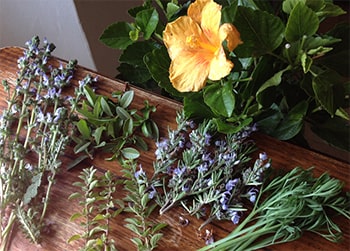
What kind of alcohol is used? Couldn’t be rubbing alcohol… must be rum, whiskey, what?
Usually vodka is used, 190 proof, as it has the least flavor of its own. You can also use the ones you mentioned as well…they might take on more of the alcohols own flavor, though I have used both vodka and rum for my homemade vanilla, but I usually do just use the vodka for tinctures.
I always use Vodka
The author commented stated “regular 80 proof or 40% alcohol such as vodka or rum will suffice.” I hope this answered your question.
Vodka is good. I’ve used it with great success.
You can purchase drinking alcohol from the pharmacy – don’t remember what it goes under but we always got it to make fruit punch for parties. They may not have it any more – it was over 60 years ago.
What would be the best for an ear infection?
mullein and garlic infused oil
They say garlic oil is good for ear pain and infection.
Can I add a little of each herb to make it super potent or just choose one herb?
What brand of alcohol do you recommend for the antibotic tincture?
Usually vodka is used due to its lack of flavor. But you can use any high proof ( 190 is good) alcohol
Thank you Carol.
The author stated, “regular 80 proof or 40% alcohol such as vodka or rum will suffice.” Hope this helped answer your question.
This does not require refrigeration, so I’d put it in a sunny window: the warmth of the sun will help ‘tincture’ it a bit faster. Just try to remember to mix it up daily. This helps the herbs all get mixed into the alcohol which prevents mold from forming.
Excellent !!
I see the ratio to make the herb tincture. Can you tell us specifically the amount of each type of herb that you used?
Stupid question here but how would OR would you be able to give this to kids?
Hi Valerie F,
Here is a list of herbs that are safe for kids:
https://theherbalacademy.com/choosing-safe-herbs-for-your-kids/
You can also make non-alcoholic extracts.
To make your non-alcoholic extracts, just substitute the alcohol called for in any extract recipe with three parts food-grade liquid glycerin and one part water. Stir the two ingredients together until well combined. Then, proceed with the recipe as usual.
You can also use vinegar:
https://thelostherbs.com/how-to-make-a-tincture-using-apple-cider-vinegar-instead-of-alcohol/
Many blessings and good health!
What if you are an alcoholic. Is there another wat to make the tincyure
Hi Mary,
To make your non-alcoholic extracts, just substitute the alcohol called for in any extract recipe with three parts food-grade liquid glycerin and one part water. Stir the two ingredients together until well combined. Then, proceed with the recipe as usual.
You can also use vinegar:
https://thelostherbs.com/how-to-make-a-tincture-using-apple-cider-vinegar-instead-of-alcohol/
Many blessings and good health!
Mullein and garlic also works great for rash due to poison ivy contact.
How long can this kind of tincture be stored? Or does have to be made and used fresh?
Never mind. I reread it and says it can be stored up to a year!
I get UTI infections . What could I use for that?
Is there one that is effective for chronic osteomyelitis? These 6 week rounds of antibiotic infusions are getting old.
What do you recommend for a husky voice , no cold or flue
For those wondering WHICH herbs to use, :””The solution is to try combining a number of antibiotic “generalists”; plants that fight a wide variety of bacteria (and are relatively easy to grow!) into a tincture.”” So I think it means to use several if not all of the mentioned herbs.
Just a warning!: Mangoes are related to poison oak! So, if allergic to poison oak, ivy or sumac, PLEASE DO NOT USE MANGO LEAVES!